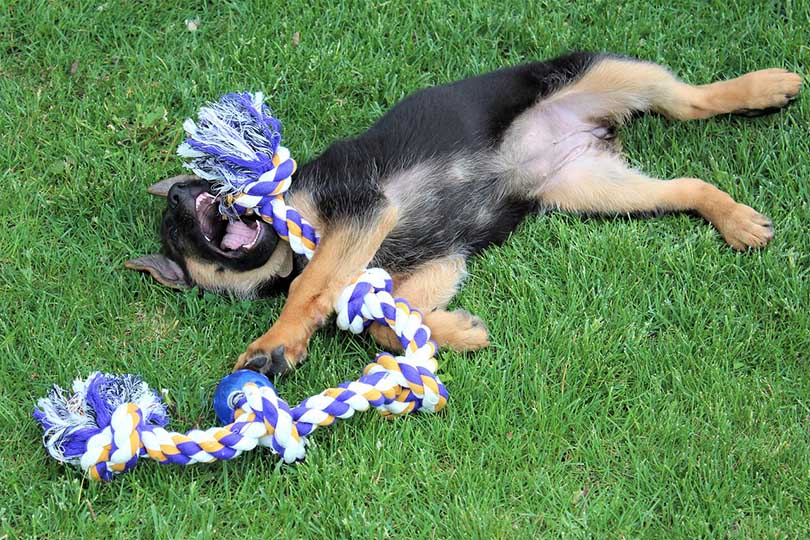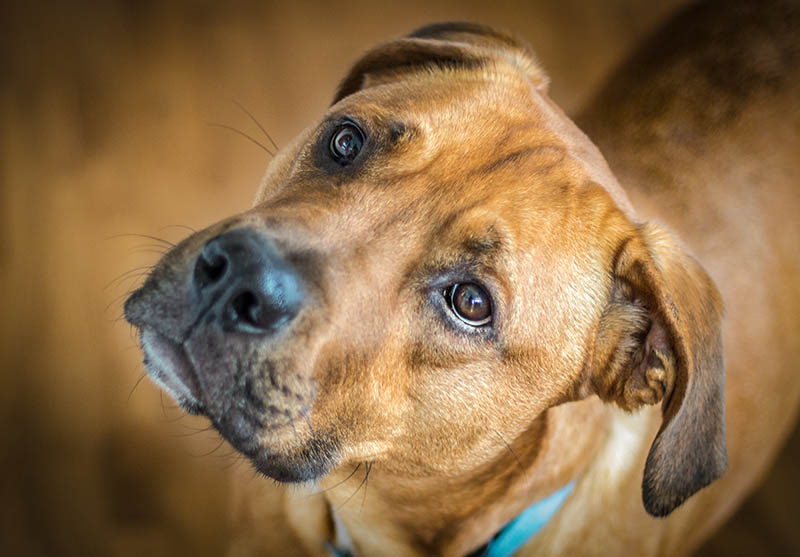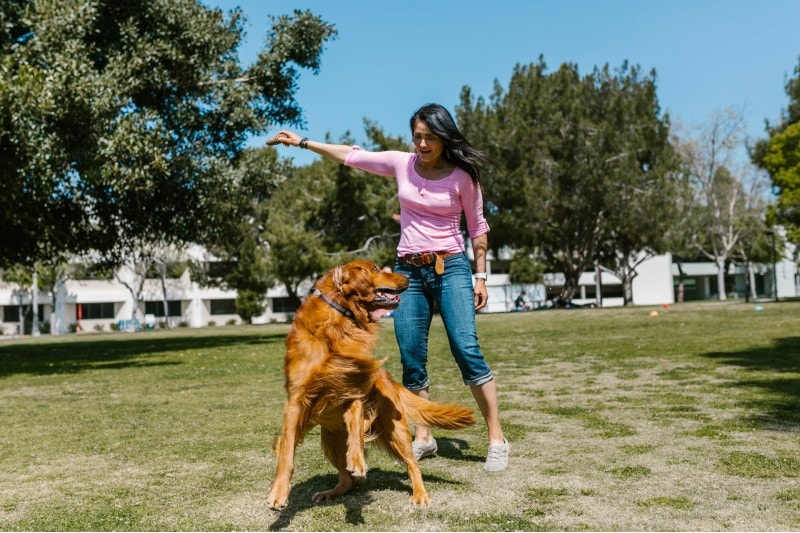Long-Haired Dachshund: Pictures, Guide Info & More
By Brooke Bundy
Updated on
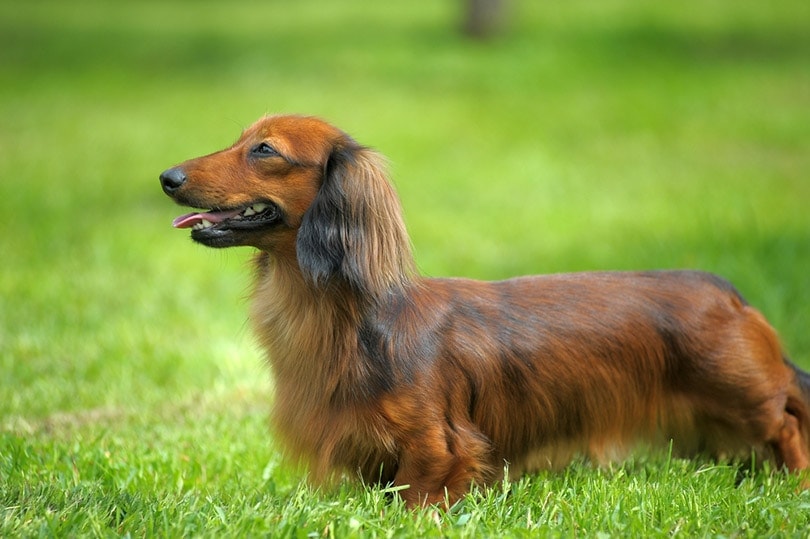
Click to Skip Ahead
Translated in its original German as “the badger hound,” the Dachshund is a well-loved dog breed around the world. The long-haired Dachshund isn’t a separate breed, but a label that distinguishes its coat from smooth-haired and wire-haired varieties. Although they’re the most expensive Dachshund, people love them because their long coat often gives them beautiful curls which resemble those of an American Cocker Spaniel, especially around their ears. All types of Dachshunds have a similar early history, so we’ll look at their origin story as well as unique characteristics of the Long-haired Dachshund.
The Earliest Records of the Long-haired Dachshund in History
It’s estimated that the earliest forms of Dachshund might have existed as far back as the 15th century. Their origins are mostly speculative, with pointers, terriers, bloodhounds, and bassets all intertwined in a sort of folklore of how they came to be. We don’t know exactly how long-haired Dachshunds received their lengthy locks. We can only guess it came from crossing the smooth-haired Dachshund with an unknown long-haired breed.
The breeding standard emerged in the 17th century as Germans began shaping the Dachshund for badger hunting. They needed a hunting dog with short legs and a long, slender back that could crawl into badger holes to flush out the prey and then easily back out of the badger’s home. A deep chest cavity for their lungs was also a necessity since there wouldn’t be as much air underground. Selective breeding and training produced the modern Dachshund, a long and stocky dog with feet for digging and a sharp bark for alerting the hunter.
The rabbit population boomed in Germany during the 1800s, resulting in hunters needing an even smaller dog. They began selectively breeding again for a smaller version of the Dachshund, which is the predecessor for the miniature that the AKC recognizes today.
While the United States only recognizes two sizes, Standard and Miniature, Germany still recognizes three sizes that are true to the Dachshund’s heritage: Standard, Miniature, and Kaninchen, which means, “rabbit.” This last size is in between the standard and miniature varieties.
How the Long-haired Dachshund Gained Popularity
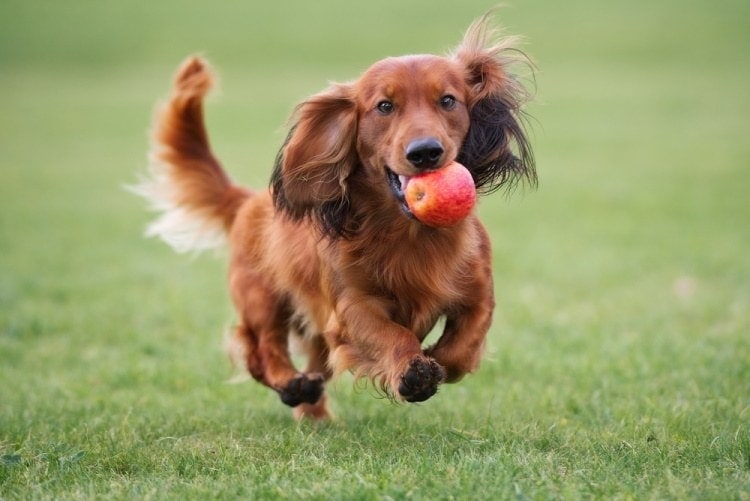
Queen Victoria warmly welcomed the Dachshund into her royal house when a representative of its breed visited England for the first time in the 1840s. Citizens of the British Empire greatly esteemed the Queen, so they readily adopted the Dachshund after seeing her zealous approval.
A few more decades passed before the Dachshund reached the United States during the 1880s. They were received with equal pleasure, with an almost immediate AKC breed recognition in 1885.
However, the timing of global events resulted in severe persecution for the Dachshund as the nation plunged into World War I and then World War II. A staunch patriotic fervor swept the nation, informally forbidding any Germanic influence from becoming prominent in the U.S. during this time—even though a lot of the American people and their animals had German roots. To protect the German Dachshund (and their owners), they were temporarily referred to as “badger dogs” or “liberty dogs” during the war, but sadly this didn’t completely prevent them from being killed in the streets.
After the war, the Dachshund continued to rise in popularity. They’re now one of the most common dogs in America.
Top 5 Unique Facts About the Long-Haired Dachshund
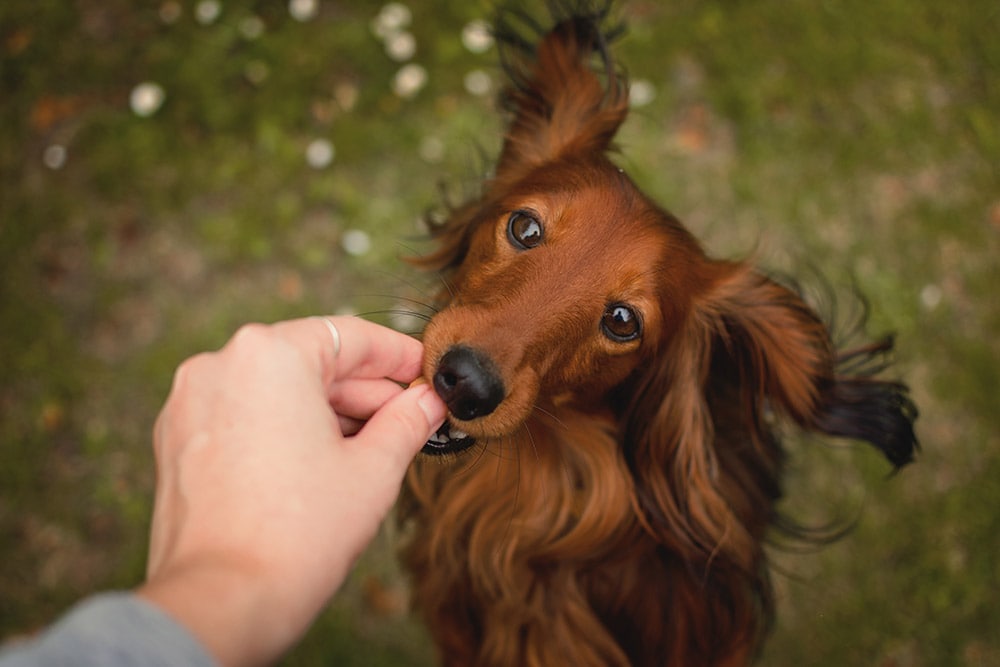
1. Different countries recognize different breed standards
The AKC only recognizes two breed standards in the U.S., standard and miniature.
2. Dachshunds have coats of many colors
There are 15 formally acknowledged coat colors for the Dachshund, ranging from black to brown to cream to red and all colors in between. The only combination that’s frowned upon is the Double Dappled, which is typically all-white with blue eyes. This mixture unfortunately tends to result in severe genetic abnormalities, including blindness and deafness. The AKC forbids any Double Dappled Dachshund from being a registered purebred as a means to discourage breeding.
3. The long-haired Dachshund is one of three accepted coat varieties
The AKC formally recognizes long-haired, smooth-haired, and wire-haired variations.
4. The long-haired Dachshund is the most expensive type
This is probably due to the recessive nature of their longer coat.
5. The Dachshund has an average life expectancy of 12-15 years
Although most Dachshunds live a modestly long life, there have been increasing reports of others enjoying lengthening years. In fact, according to Guinness World Records, the oldest dog still living today is a 21 year old Dachshund named Funny.
Does The Long-Haired Dachshund Make a Good Pet?
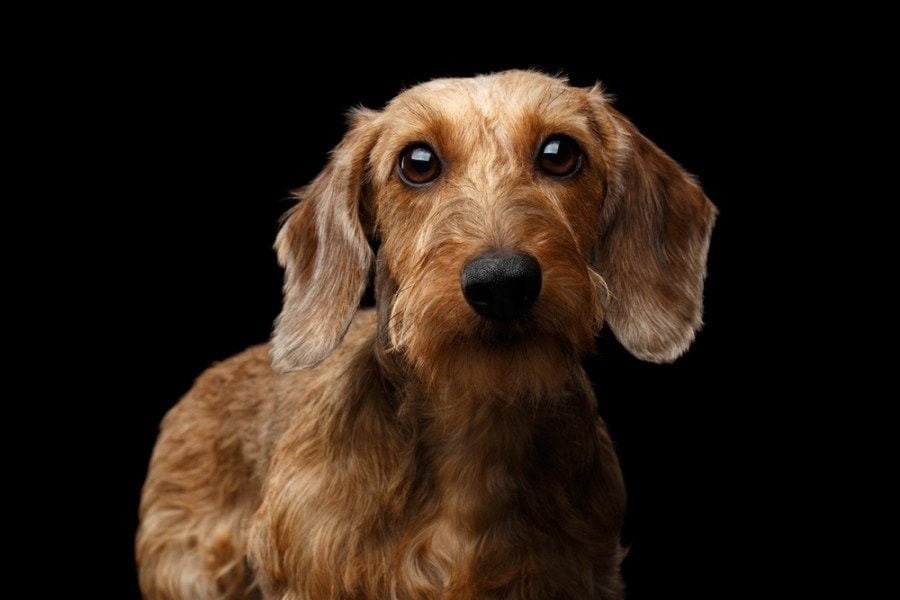
There’s a common misconception that the Dachshund is lazy like the Basset hound, but this is far from the truth. While they’re quite content taking naps with you under the covers, this stocky breed also has a tendency towards obesity, which can further damage their joints. A well-balanced diet and moderate exercise is key to keeping the Dachshund in top shape. They especially benefit from treat puzzles that make them forage for their snack.
Dachshunds also enjoy going on walks in the woods where they might spot a prized rabbit or squirrel. Dachshunds in general are prone to back troubles, and shouldn’t be allowed to jump on and off furniture to reduce their risk of injury. A ramp or built-in staircase to the bed is preferred.
Since these dogs were originally bred as working dogs, Dachshunds are notoriously stubborn little guys that can be difficult to train. You’ll need to make sure they receive plenty of stimulating exercise to curb destructive household behaviors such as excessive barking and digging. Because they were bred to dig in badger holes, make sure your fence is secure to prevent them from escaping.
The long-haired Dachshund loses their coat four times a year as the seasons change. Although they’re considered low maintenance, they’ll need a little more grooming than other Dachshund varieties to prevent tangles in their long locks as they shed.
Conclusion
The long-haired Dachshund shares a rich heritage with other breed varieties. As avid hunters, their low bodies enabled them to crawl into badger holes that other dogs could only bark at. With their badger-hunting days long behind them, people now adopt the Long-haired Dachshund as a family pet. The AKC lists the Dachshund in the top ten most popular breeds in this year, indicating that their popularity is far from diminishing.
Featured Image Credit: Anna Krivitskaya, Shutterstock


